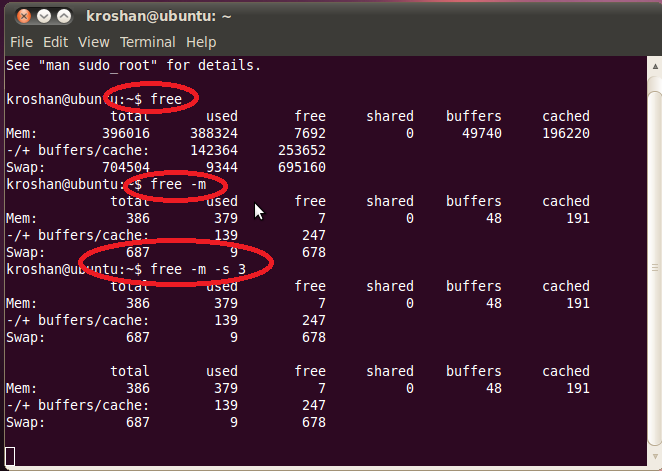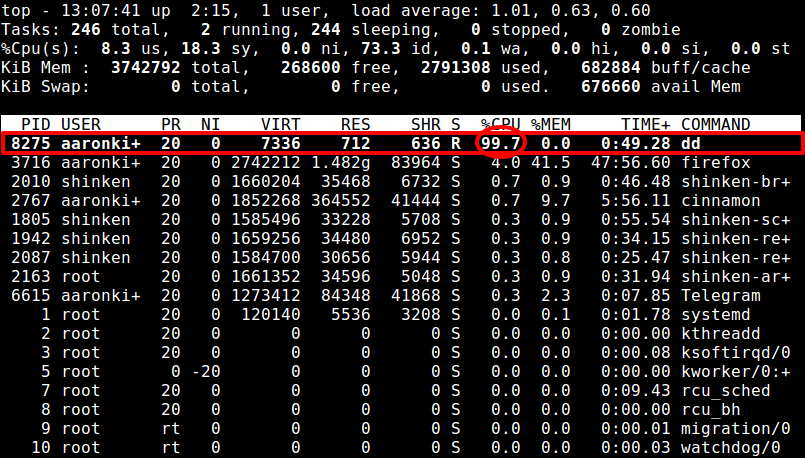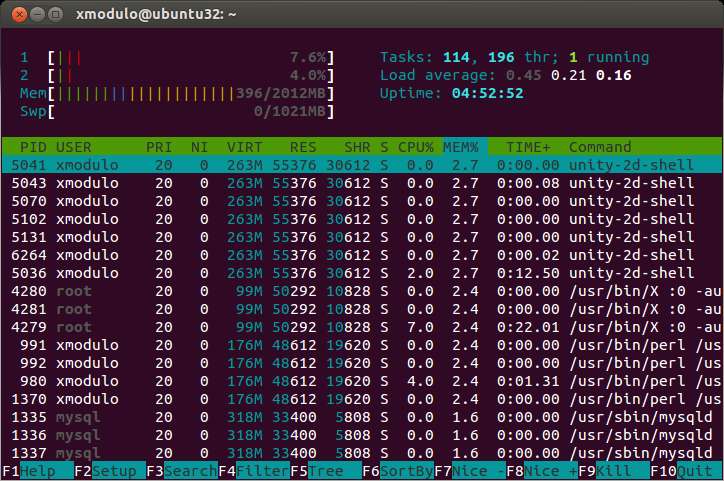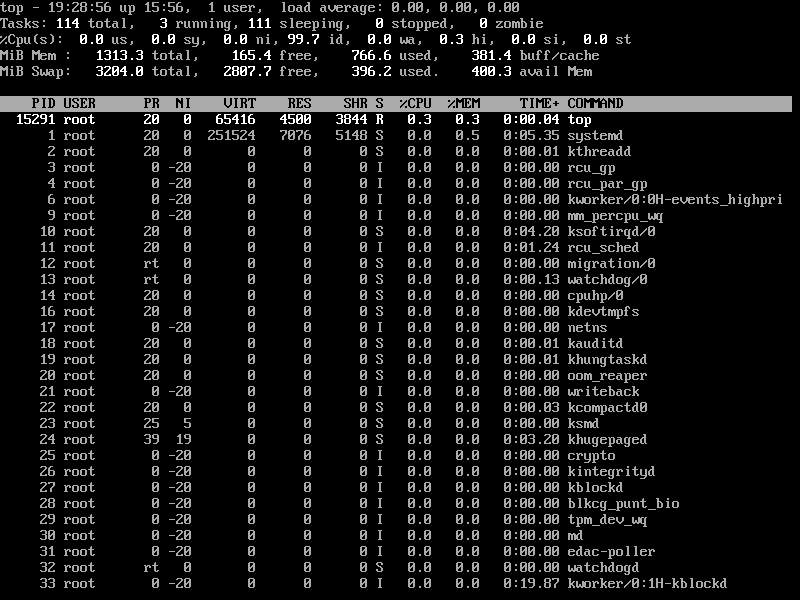

- Linux monitor cpu and memory usage install#
- Linux monitor cpu and memory usage series#
- Linux monitor cpu and memory usage download#
- Linux monitor cpu and memory usage windows#
cd /usr/lib/nagios/plugins/Įdit NRPE configuration file and add a command to check memory uses like below.

On CentOS/RHEL 64-bit systems this local will be /usr/lib64/nagios/plugins. The command prints the pid,ppid,cmd,mem and cpu columns and monitors the statistics every single second while sorting the CPU utilization in descending order.

Linux monitor cpu and memory usage download#
Download check_mem.pl using the following command and copy it to the Nagios plugins directory. You can download the check_mem.pl and configure with NRPE daemon. Monitor Memory UsesĪ Nagios plugin is available to monitor memory uses on Linux systems. The requests go to the remote host and the NRPE server checks for the command defined as check_load and execute it. The top utility can be used to troubleshoot throughput and memory issues with the Remote Agent for Linux and Unix Servers (RALUS). Let’s verify the configuration by running the check_nrpe command from the Nagios serverĪs per the above screenshot, the Nagios server sent NRPE requests to the defined host (192.168.1.15) to execute command check_load and send results back. You don’t need to make any changes.Ĭommand =/ usr/ lib/ nagios/ plugins/ check_load - w 15, 10, 5 - c 30, 25, 20 Edit the NRPE configuration file and check for the following entry. Monitor CPU LoadĪ Nagios plugin check_load is available to check current CPU load on the system. You need to edit this file for making changes as per the next instructions. NRPE default configuration file is /etc/nagios/nrpe.cfg.
Linux monitor cpu and memory usage install#
Linux monitor cpu and memory usage series#
In the series of Nagios monitoring tutorials, this tutorial will help you to monitor Memory, CPU, and Disk on a remote Linux system using Nagios and NRPE. For a list of trademarks of The Linux Foundation, please see our Trademark Usage page.Nagios is the most popular monitoring server for infrastructure monitoring. The Linux Foundation has registered trademarks and uses trademarks. © Prometheus Authors 2014-2023 | Documentation Distributed under CC-BY-4.0 Please help improve it by filing issues or pull requests.

The average network traffic received, per second, over the last minute (in bytes) The filesystem space available to non-root users (in bytes) Now, to make it execute every 10 minutes for 6 times in the server, I would put the below script. Nevertheless, you could figure out the corresponding syntax from man ps in your machine. I believe -C and -o flags are supportedin AIX server. The average amount of CPU time spent in system mode, per second, over the last minute (in seconds) To monitor the CPU usage and memory usage, the command that you use is ps. Once the Node Exporter is installed and running, you can verify that metrics are being exported by cURLing the /metrics endpoint: curl You should see output like this: # HELP go_gc_duration_seconds A summary of the GC invocation durations. INFO Listening on :9100 source="node_exporter.go:111" INFO - boottime source="node_exporter.go:97" It can be used to determine the root cause of performance and issues related to memory use. What is vmstat vmstat is a tool that collects and reports data about your system’s memory, swap, and processor resource utilization in real time. If youre on AWS, CloudWatch makes monitoring CPU usage very easy. INFO Enabled collectors: source="node_exporter.go:90" The documentation below which is from: Use vmstat to Monitor System Performance. The Trivial Solution: Use Your Cloud Providers Graphs This solution is by far the easiest to use, but it wont be available for everyone. Its useful in case when you need extra metrics from the process (es), e.g. INFO Build context (go=go1.9.6, date=20180515-15:53:28) source="node_exporter.go:83" pidstat (part of sysstat package) can produce output that can be easily parsed. You should see output like this indicating that the Node Exporter is now running and exposing metrics on port 9100: INFO Starting node_exporter (version=0.16.0, branch=HEAD, revision=d42bd70f4363dced6b77d8fc311ea57b63387e4f) source="node_exporter.go:82" Once you've downloaded it from the Prometheus downloads page extract it, and run it: # NOTE: Replace the URL with one from the above mentioned "downloads" page. The Prometheus Node Exporter is a single static binary that you can install via tarball.
Linux monitor cpu and memory usage windows#
NOTE: While the Prometheus Node Exporter is for *nix systems, there is the Windows exporter for Windows that serves an analogous purpose.


 0 kommentar(er)
0 kommentar(er)
